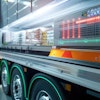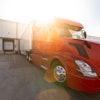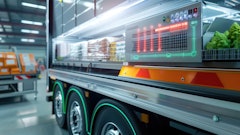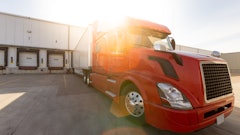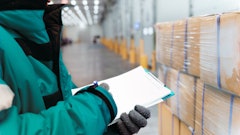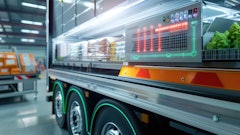Organically Grown, a produce wholesaler serving the Pacific Northwest, is experiencing 25 percent to 35 percent growth per year. To what do you attribute this success?
Petrick: We attribute the success and growth to the demand for healthy food. People are becoming more and more interested in eating healthy and making healthy lifestyle choices. There’s more information coming all the time about the hazards of consuming pesticides and I think popular conscience is making a shift towards quality rather than quantity.
I’ve been here for 11 years now, and in that time we’ve never seen anything less than 20 percent growth per year. That kind of growth makes business very exciting. You never stay idle for very long.
One of the main effects it has had on our business was the realization that our resources within our own staff were fairly finite, and that we needed to work with outside sources who had experience and expertise in the areas we were lacking in to help us manage our growth.
Shipping organic products typically means moving products from farm, through your facilities, and out to the customer within days after it is picked. How do farmers get products to your locations?
Petrick: We procure product a few different ways. We use outside carriers for all product that originates out of California and points south. For local products, we pick it up directly at the farm or the farmer delivers it into one of our warehouses.
The cold chain is essential when you’re dealing with a volatile commodity like produce. The product has to be off-loaded, received and rotated into inventory in as little time as possible to ensure that the quality is maintained from the field to the table. Often times the product is being off-loaded and loaded to a delivery vehicle destined for the customer in a window of less than two hours.
Since produce has a very limited shelf life, typically there is a very localized distribution network. How far does your network extend?
Petrick: The majority of our direct deliveries are on the I-5 corridor between Medford, OR, and Bellingham, WA. We do some shipping via barge to Alaska, that we drop in Seattle, and some through third-party truckers as far east as Georgia and Maryland. We also do some air freight to Alaska and Hawaii.
Who are your typical customers, and what kind of special accommodations have to be made to supply them?
Petrick: We have a wide range of customers. Most people associate organics with the hippy co-ops of the 1960s. We still service a lot of co-ops, but around five years ago we also started getting a lot more interest from mainstream grocery stores, food-buying clubs and other wholesalers.
Mainstream grocery stores often require special packs on products, like a 12-count case of lettuce when the standard is 24-count, more strict regulations with product look-up (PLU) stickering and barcodes.
How much of your product is shipped directly to customers, and how does that shape your warehousing and transportation options?
Petrick: The majority of our product is shipped directly to customers, yet we do business with other DCs as well. Due to the variety of customer needs, we have to design our system to meet all types. We have a variety of truck sizes, ranging from 53-foot, tri-axle tractor trailers used for DC shipments to small box vans used for small DSD deliveries.
We also have to configure our warehouse to accommodate both truckload and case volume and have multiple storage environments based on temperature, ethylene gas and humidity levels. Within these various storage environments we use different types of racking and storage strategies to making receiving, inventorying and picking our product as easy as possible.
Organically Grown uses biodiesel fuels in its trucking fleet. What kind of results has that given the company in fuel costs, gas mileage, etc?
Petrick: With the cost of fuel being where it is currently, bio-diesel is on a par with petroleum. We compromise fuel economy a bit (about 5 percent less), but, our philosophy is the triple bottom line, “Planet, People, Profit.”
One of our goals is to eliminate dependence on foreign oil, and to contribute to the local economy by increasing demand for domestically produced seed crops that can be used for fuel.
What other unique challenges do you face in your job?
Petrick: We have set the bar very high with our declaration to become a leading sustainable organization. Basically, we have said that making a profit is not enough. We want to make a profit, but we want to do it in a way that respects the three components of the triple bottom line—planet, people, profit. We want to reduce our ecololgical footprint, maintaining partnerships with people across the food trade, and be a business capable of sustaining itself for years to come.
When you have to consider all those factors, it makes decision-making a little more challenging. No longer can you simply look for the solution that will save the most money, you have to think about what is the greatest good. — Leonard Klie

